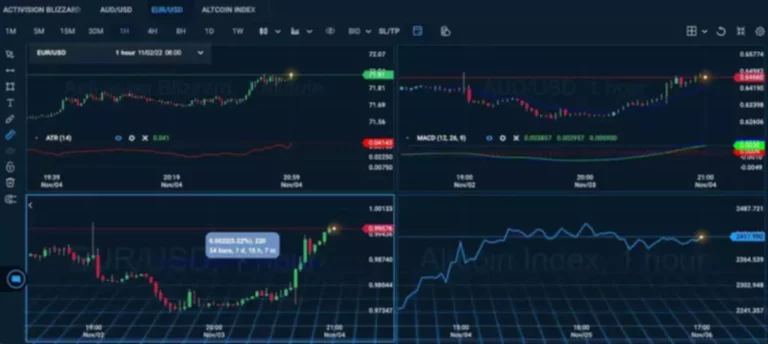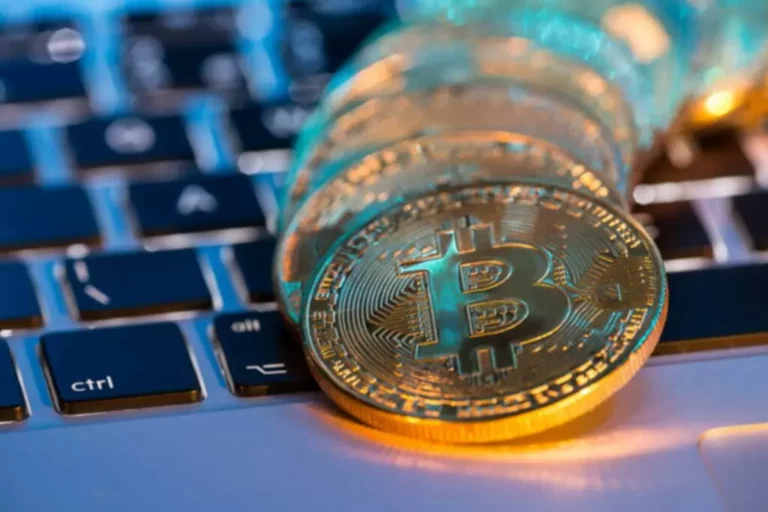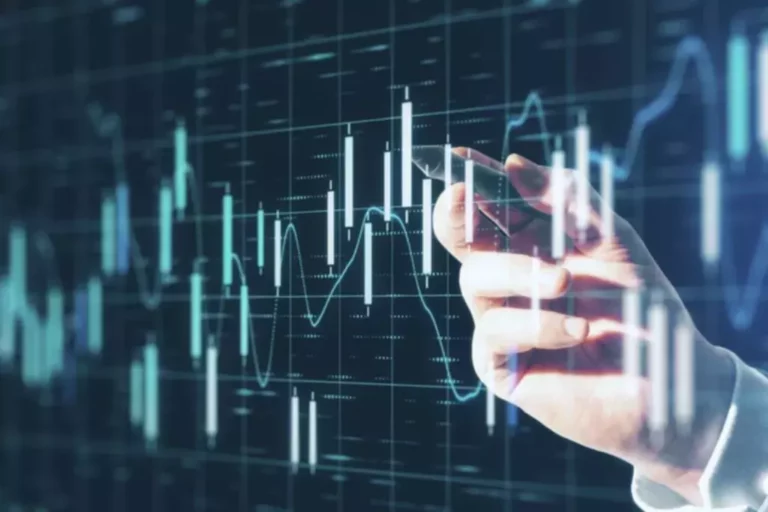Content
Choose exchanges known for significant trading volumes and an active trading community. These factors help reduce price slippage and maintain profitability without incurring additional fees. Trading accounts can be funded with a wide range of payment methods, including wire transfer and ACH transfer. Because of its large number of supported assets (5,500+) on Coinbase Wallet and easy-to-use platform, Coinbase has become the go-to exchange for many first-time crypto buyers. The platform has the look and feel of an online banking app, which most people crypto exchange fees use already, making the transition to crypto investing simple.
Cryptocurrency exchanges with low transaction fees

Hence, if you’re an active trader, you’ll be rewarded https://www.xcritical.com/ with lower fees as you increase your trading volume. The more you trade, the more you can save—this is a great incentive if you’re constantly making trades. You’ll never be able to avoid cryptocurrency transaction fees entirely, but you can choose to use services with lighter fee structures. Those fees can add up if you do a lot of trading in the crypto market.
Why You Should Trust Us: Our Expert Panel For The Best Cryptocurrency Exchanges
This applies to all users with the Midnight Blue, Ruby Steel, Royal Indigo, or Jade Green cards. The popular stock broker Robinhood (HOOD 3.29%) also offers trading services for a handful of cryptocurrencies. The company says that your crypto trades are commission-free on Robinhood, with a 0% fee for any type of order. While low fees are a significant factor when choosing forex crm a cryptocurrency exchange, they’re not the only criteria that matter.
Best Crypto Exchanges and Apps for January 2025
Yes, Crypto.com fees are charged based on the type of transaction, including trading, deposit, and withdrawal fees. These charges vary by service and are typically competitive with other platforms like Binance, Bybit, or Kraken. For instance, trading fees use a maker-taker model, rewarding those who provide liquidity. By understanding each fee type, you can make better financial choices across your transactions.
- The top cryptocurrency exchanges allow you to buy, sell, and trade popular cryptocurrencies, NFTs, and other digital coins and tokens.
- During periods of increased volatility, the difference between the mid-market price and the Bid and Ask prices will increase.
- If you surpass the $10,000 mark, you’ll pay fees between 0-0.4% on Coinbase Advanced.
- Given Bitcoin’s tendency to change prices at the drop of a hat, the network fee amounts to a rounding error under normal circumstances.
- Through this and various other transactions I can see the margin varies between 3.5%-5.5%.
- You can make bigger trades than usual, and if the market moves in your favor, your profits can soar.
- Each transaction carries a cost, which varies based on the platform, payment method, and currency.
How Do Cryptocurrency Exchanges Make Money?
While Coinbase is a suitable digital asset exchange for both new and advanced crypto investors, trading fees can be relatively high, ranging from 0% to 0.60%, depending on trade volume. For instance, several Trustpilot users mention problems with customer support. Additionally, there are numerous stories of unexpected account closures that have tainted the exchange’s image. Kraken’s professional-grade trading platform is our pick for the best low-fee exchange because it charges some of the lowest fees in the crypto asset exchange landscape. However, it’s also our top choice for experienced traders, as it offers advanced order types and supports margin and futures trading.
In contrast, countries like Japan, Singapore, and Switzerland have more favorable regulatory environments for crypto trading, resulting in lower fees for users. Because centralized exchanges have more control over the trading process, they can charge higher fees to cover their operational costs and generate profits. In contrast, DEXs have lower fees since they have fewer overhead expenses.
The exchange became publicly traded after an initial public offering and listing on Nasdaq in April 2021. Cryptocurrency fans can choose from over 400 cryptocurrencies on Binance; however, U.S. customers can only select from a little more than 150 cryptocurrencies on Binance.US due to regulations. Initially a niche market avoided by traders and investors, cryptocurrency has grown into a class many investors get into for the possibility of huge returns. If you’re interested in taking part in this sector, it’s best to use a regulated cryptocurrency exchange to gain exposure.

Crypto.com also gives you the option to lock up CRO tokens, which can be a game-changer. By holding 5,000 CRO in your wallet as collateral, you may be eligible for better terms on these interest rates, depending on your account level and the asset you’re borrowing. A transaction fee is a charge that is attached when you’re buying or selling something.
In this exclusive interview our head of PR explains what forces push the crypto exchange platform industry forward. To do this, you need to maintain a certain level of trading or prove your participation in market maker programs on other exchanges. Coinremitter is a cryptocurrency payment processor that lets merchants process errorless, fast and secure crypto transactions. Makers add liquidity to the market by placing orders that aren’t immediately matched with existing orders.
This incentivizes maintaining a robust and liquid trading environment on the platform. Deposit fees are charges incurred when adding funds to your exchange account. Many low-fee crypto exchanges offer free deposits for most cryptocurrencies and some fiat options. It’s important to review an exchange’s deposit fee structure to minimize costs when funding your account. Taker fees apply when you place an order that’s immediately matched with an existing order on the books. Taker fees are typically higher than maker fees on most crypto exchanges.
During this time, you might be unable to do other things with your account, like withdraw or transfer. Once the confirmations roll in, your crypto is good to go, and you can get back to business. While looking for the right combination of these crucial features, you should consider investing in safer asset classes such as stocks instead.
With a brokerage, however, there is no « other person » – you come and exchange your crypto coins or fiat money with the platform in question, without the interference of any third party. When considering cryptocurrency exchange rankings, though, both of these types of businesses (exchanges and brokerages) are usually just thrown under the umbrella term – exchange. The existence of fees also lowers the risk of pointless or harmful transactions overwhelming the cryptocurrency platforms. Any system for payments and data transfers without transaction fees would quickly be flooded by spam. Swyftx charges a spread in addition to the trading fee for each cryptocurrency transaction (buying, selling, or swapping). Both the spread and trading fee are included in the displayed price before confirming your trade.

You can borrow up to 5x your account with a margin for increased liquidity and higher trading volumes. Coinbase has a low account minimum to get started and offers digital wallet storage for cryptocurrencies and other digital assets. Coinbase’s beta NFT trading platform has no transaction fees for creators and collectors.
Decentralized exchanges have seen significant changes in their fee structures. Many DEXs have moved towards dynamic fee models that adjust based on network congestion and liquidity. Some platforms have introduced fee-sharing mechanisms, where users can earn a portion of the trading fees by providing liquidity. Gas fees remain a concern, but layer-2 solutions and alternative blockchains are helping to reduce these costs.
As I’ve touched on earlier in this Crypto.com Fees article, staking CRO, Crypto.com’s native currency, is one of the noteworthy ways to reduce extra costs. ATM withdrawals can be convenient, although they do come with a 2% fee if you exceed your monthly free ATM limit. That means after you’ve hit the free withdrawal limit, any additional withdrawals will be subject to that 2% fee. Plus, don’t forget that ATM providers may charge their own fees, which are tacked on top of your Crypto.com ATM fees.
